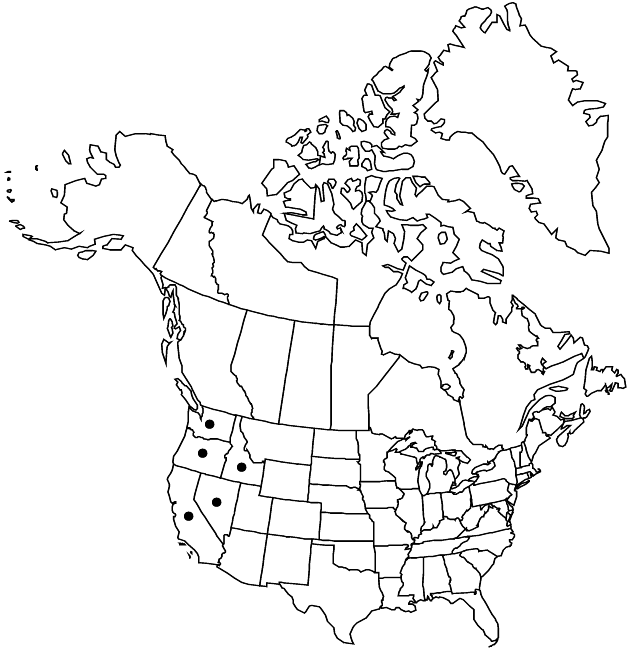Difference between revisions of "Psilocarphus oregonus"
Trans. Amer. Philos. Soc., n. s. 7: 341. 1840.
FNA>Volume Importer |
imported>Volume Importer |
||
| (2 intermediate revisions by 2 users not shown) | |||
| Line 8: | Line 8: | ||
}} | }} | ||
|common_names=Oregon woollyheads or woolly marbles | |common_names=Oregon woollyheads or woolly marbles | ||
| + | |special_status={{Treatment/ID/Special_status | ||
| + | |code=E | ||
| + | |label=Endemic | ||
| + | }} | ||
|basionyms= | |basionyms= | ||
|synonyms= | |synonyms= | ||
| Line 47: | Line 51: | ||
|publication title=Trans. Amer. Philos. Soc., n. s. | |publication title=Trans. Amer. Philos. Soc., n. s. | ||
|publication year=1840 | |publication year=1840 | ||
| − | |special status= | + | |special status=Endemic |
| − | |source xml=https:// | + | |source xml=https://bitbucket.org/aafc-mbb/fna-data-curation/src/2e0870ddd59836b60bcf96646a41e87ea5a5943a/coarse_grained_fna_xml/V19-20-21/V19_763.xml |
|tribe=Asteraceae tribe Gnaphalieae | |tribe=Asteraceae tribe Gnaphalieae | ||
|genus=Psilocarphus | |genus=Psilocarphus | ||
Latest revision as of 19:55, 5 November 2020
Plants silvery to whitish, densely sericeous to somewhat lanuginose. Stems (1–)2–10, ascending to ± prostrate; proximal internode lengths mostly 0.5–1.5(–2) times leaf lengths. Capitular leaves ± erect, appressed to heads, linear to narrowly oblanceolate, widest in distal 2/3, longest 12–20 mm, lengths mostly 6–12 times widths, (3–)3.5–5 times head heights. Heads ± spheric, largest 4–6 mm. Receptacles unlobed. Pistillate paleae individually visible through indument, longest mostly 1.5–2.7 mm. Staminate corollas 0.7–1.4 mm, lobes mostly 4. Cypselae narrowly ± cylindric, terete, 0.6–1.2 mm.
Phenology: Flowering and fruiting late Mar–mid Aug.
Habitat: Seasonally inundated or flooded clay soils (vernal pool margins, drainages, moist rocky slopes)
Elevation: 10–1800(–2400) m
Distribution

Calif., Idaho, Nev., Oreg., Wash.
Discussion
Psilocarphus oregonus occurs from west-central California through most of Oregon to southeastern Washington, western Idaho, and northern Nevada. Relatively narrow-leaved, montane forms of P. tenellus account for reports of P. oregonus from the southern Sierra Nevada to Baja California; further study may show these to be intermediates between the two taxa.
A malformed plant collected in Merced County, California, appears to have been a sterile hybrid between P. oregonus and Hesperevax caulescens (J. D. Morefield 1992c).
Selected References
None.